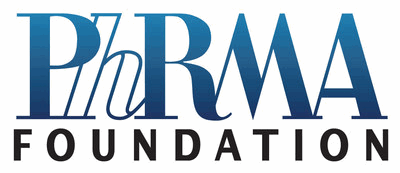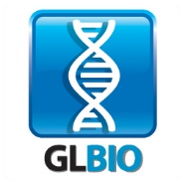Call for Proceedings - ISMB 2018 (Closes January 29, 2018)
Proceedings Co-chairs: Yana Bromberg, Rutgers University, New Brunswick, United States
Predrag Radivojac, Indiana University, Bloomington, United States
ISMB 2018 invites submissions reporting theoretical, computational, and statistical advances in computational biology and its intersections with other fields.
Submissions are encouraged to report on advances in algorithm development and optimization, data structures, data visualization, artificial intelligence/machine learning, text mining, statistical inference, database and ontology development, image analysis, citizen and open science, etc. to analyze all types of biological data.
While we encourage submissions in new and emerging areas, we expect that the majority of submissions addressing topical biological domains will fall into one of the areas below. Please note during the submission process you will first select your "area" (the list below) and when providing submission details you will also have the opportunity to select your preferred COSI shown as "topics" in EasyChair (learn more about COSIs here).
| Areas: | |
|---|---|
| Studies of Phenotypes and Clinical Applications (COSIs within this area include: Bio-Ontologies, BioVis, CAMDA, Function, HiTSeq, MLCSB, NetBio, RNA, TransMed, VarI) Chair: Anna Goldenberg, University of Toronto, Canada 3DSIG focuses on structural bioinformatics and computational biophysics. It is impossible to fully understand biological systems without understanding the 3D structure of their constituting parts and their interactions. As such the topics relevant for 3DSIG are wide and include, but are not restricted to Structure-based drug discovery including polypharmacology and network pharmacology; Structure representation, classification and prediction; Structure-based function prediction; Docking, analysis, prediction and simulation of biomolecular interactions such as protein-protein, protein-ligand and protein-nucleic-acid; Protein dynamics and disorder; Evolution studied through structures; Application of structure to systems biology; Macromolecular assemblies; Structural genomics; 3D databases and data mining; Molecular visualization; Relevant methods of structure determination particularly hybrid methods; Prediction and analysis of protein domains; Membrane protein structure analysis and prediction; The structural basis of immunology. Keywords: Drug-discovery; Structure representation/classification/prediction; Structural basis of macromolecular function; Prediction and simulation of biomolecular interactions; Dynamics of biological macromolecules; Evolution studied through structures; Structural systems biology/pharmacology; 3D visualisation/data mining/databases; Structure-based protein engineering; Structural basis of human diseases |
Computational approaches to the study of phenotypes at cellular and organismal levels, including disease predisposition, progression, and treatment; considering multi-omic, imaging and clinical data. |
|
Comparative and Functional Genomics Chair: Carl Kingsford, Carnegie Mellon University, United States Bio-Ontologies Special Interest Group covers the latest and most innovative research in the application of ontologies and more generally the organization, presentation and dissemination of knowledge in biomedicine and the life sciences.
Keywords: Ontology; Knowledge representation; Data integration; Automated reasoning; Text mining: Machine learning; Biocuration; Semantic web; Deep phenotyping; Learning health system |
Genome structure and function across species or strains; genome assembly, genome organization, and annotation; epigenetics. |
| Bioinformatics Education (COSIs within this area include: Education, MICROBIOME) Chair: Fran Lewitter, Whitehead Institute for Biomedical Research, United States The BioVis aims to educate, inspire, and engage bioinformatics and biology researchers in state-of-the-art visualization research and visualization researchers in problems in biological data visualization. The rapid adoption of data-intensive biology approaches creates enormous challenges for computational visualization techniques, which are needed to enable researchers to gain insight from their large and highly complex data sets.
Keywords:Biological data visualization; Visual data analysis; Visualization tools and libraries; Usability of visualization, genome and sequence data visualization; Network and pathway visualization; Multivariate data visualization; Imaging data visualization; Workflow and process visualization; Metadata visualization |
Systematic examination and analysis of learning models, outcomes, and educational programs. |
| Genomic Variation Analysis (COSIs within this area include: BioVis, Function, HiTSeq, MICROBIOME, MLCSB, NetBio, RegSys, RNA, TransMed, VarI) Chair: Sriram Sankararaman, UCLA, United States The Critical Assessment of Massive Data Analysis (CAMDA) sessions highlight and compare the latest methods and results in an international data analysis contest, with this year's topics including: (1) a cancer data-integration challenge for 500 children patients (FDA SEQC), (2) a meta-genomics challenge comparing swabs from subway stations in multiple cities (MetaSUB), and (3) a meta-genomics signal level challenge in Oxford Nanopore 'wiggle space'.
Keywords: International data analysis contest; Community wide experiment; Critical assessment of massive data analysis; Meta-genomics, cancer, data integration, gene expression, genomic deletions and duplications; Next-generation sequencing / RNA-seq, microarrays |
Detection, qualification, and annotation of genomic variants and their structural and functional effects, and clinical or pharmaco-relevant applications. |
| Bioinformatics of Microbes and Microbiomes (COSIs within this area include: BioVis, CAMDA, HiTSeq, MICROBIOME, NetBio) Chair: Mihai Pop, University of Maryland, United States Function COSI brings together computational biologists, experimental biologists, biocurators, and others who are dealing with the important problem of gene and gene product function prediction, to share ideas and create collaborations. Also, we are conducting a multi-year Critical Assessment of protein Function Annotation, or CAFA, experiment.
Keywords: Protein function; Ontologies; Machine learning; Computational challenge; Annotation |
Computational methods and algorithms for studying microbial organisms, viruses, and their communities from omics and marker data. |
| Population Genomics and Molecular Evolution (COSIs within this area include: BioVis, Evolution and Comparative Genomics, Function, HiTSeq, MICROBIOME, MLCSB, RNA, VarI) Chair, Nadia El-Mabrouk, University of Montreal, Canada HiTSeq is a special interest group devoted to the latest advances in computational techniques for the analysis of high-throughput sequencing (HTS) data. Sessions will be devoted to discussing the latest advances in computational techniques for the analysis of high-throughput sequencing (HTS) datasets and will provide a forum for in-depth presentations of the methods and discussions among the academic and industry scientists working in this field. We seek contributions on any topic involving HTS data analysis including: genome assembly and haplotype phasing; transcriptome analysis; genetics and epigenetics variation; metagenomics and microbiome analysis; and new HTS platform data analysis (e.g. synthetic reads, long reads, nanopore). In addition to general sessions, we propose to have two specialized sessions to focus on current hot topics: a) long sequencing and mapping techniques, b) single cell sequencing applications, c) non-linear genome representations. Both of these topics have generated an enormous amount of interest recently. Keywords: High-throughput sequencing; NGS; Algorithms; Read mapping; Data structures, Variant calling; DNA sequencing; RNA-seq; Single cell; Precision medicine |
Algorithms for phylogeny estimation and modelling variation and change under the influence of evolutionary processes. |
|
Macromolecular Sequence, Structure, and Function This RNA COSI covers the full range of research topics in the field of RNA Biology, from computational and high-throughput experimental methods development to their application in different aspects of RNA processing, structure, and function. Focusing on two major areas: (1) the development of computational and high-throughput experimental methods, and (2) the application of such methods to break new grounds in the study of RNA biology and disease, meshing together different aspects of Computational RNA Biology, and promoting cross-disciplinary collaborative research.
Keywords: Transcriptomics; RNA processing; Post-transcriptional regulation; Non-coding RNA; RNA 2D/3D structure, alternative splicing, alternative polyadenylation; RNA editing translation degradation and localization; Protein-RNA interactions; Genetic variants effect on RNA processing; RNA and disease |
Analysis and annotation of DNA, RNA, and proteins to predict, characterize, and understand their structure, function, and evolution; omics data analysis to characterize form, abundance, and function of biological macromolecules. |
| Systems Biology and Networks (COSIs within this area include: Bio-Ontologies, BioVis, Function, MICROBIOME, MLCSB, NetBio, RegSys, TransMed) Chair: Roded Sharan, Tel-Aviv University, Israel Network Biology covers new developments across this important and still burgeoning field; focusing on two major areas: (1) the development of network-related tools and resources, and (2) the application of network analysis and visualization in the study of biology and medicine. The session will provide a unique interface between tool developers and users in the field of network biology, and will bring into focus the current state of the field, its future promise and how to get there.
Keywords: Molecular networks; Molecular interactions; Network analysis; Network visualization; Network alignment; Network reconstruction; Heterogeneous networks; Diagnostic networks,: Network tools, Network databases |
Emergent properties and complex multi-component interactions within biological systems, considering genomic, proteomic, metabolomic, and other -omic data; gene regulation and circuit design. |
|
Genome Privacy and Security Regulatory genomics involves the study of the genomic "control system," which determines how, when and where to activate the "blueprint" encoded in the genome. Regulatory genomics is the topic of much research activity worldwide. RegGenSIG focuses on bioinformatics for regulatory genomics and will foster a collaborative community wherein scientists convene to solve difficult research problems in all areas of computational regulatory genomics.
Keywords and phrases: Gene regulation; ChIP-seq, RNA-seq, ATAC-seq; Transcription factors; Enhancers; Chromatin; Gene promoters; Regulatory elements; Epigenetics; Regulatory motifs and modules; Epigenomics and chromatin state; Alternative splicing; Pathway analysis; Non-coding RNAs; Regulatory networks; Co-transcriptional, post-transcriptional, and translational regulation; Genetic, molecular, and phenotypic variation and human disease; The role of non-coding mutations in disease; DNA shape; Single-cell transcriptomics (and other single cell assays); 3D genomics (e.g., Hi-C and ChIA-PET); Epitranscriptomics; Regulatory evolution or comparative regulatory genomics |
Methods related to the protection of individualized genomic and medical information; privacy models. |
|
General Computational Biology* SysMod aims to create a forum for systems modelers and bioinformaticians to discuss common research questions and methods. Focusing on the conjoint use of mathematical modeling and bioinformatics to understand biological systems functions and dysfunctions. SysMod is open to the full range of methods used in systems modeling, including qualitative and quantitative modeling, dynamical and steady-state modeling, as well all applications of systems modeling including basic science, bioengineering, and medicine.
Key words and phrases: Mathematical model; Numerical simulations; Whole genome metabolic models; Signalling pathways; Systems medicine; Quantitative systems pharmacology; Data and model integration; Model parametrization; Multi-scale models; Synthetic biology |
Novel techniques in emerging areas of computational biology, including intersections with other fields. |
Rolf Backhofen, Albert-Ludwigs-University, Germany (RNA)
Jan Baumbach, TU Munich, Germany
Emidio Capriotti, University of Bologna, Italy (VarI)
Ana Conesa, Centro de Investigación Príncipe Felipe, Spain (HiTSeq)
Christophe Dessimoz, University of Lausanne, Switzerland (Evolution)
Jeremy Goecks, Oregon Health & Science University, United States (BioVis)
Paweł P Łabaj, Austrian Academy of Sciences and Jagiellonian University, Poland (CAMDA)
Florian Markowetz, University of Cambridge, United Kingdom (MLCSB)
Nicola Mulder, University of Cape Town, South Africa (Education)
Alice McHardy, Helmholtz Centre for Infection Research, Germany (Microbiome)
Natasa Przulj, University College, London, United Kingdom (NetBio)
Venkata Satagopam, Université du Luxembourg (TransMed)
Saurabh Sinha, University of Illinois at Urbana–Champaign, United States (RegSys)
Karin Verspoor, University of Melbourne, Australia (Bio-Ontologies)
Olga Vitek, Northeastern University, United States (CompMS)
| Proceedings Submission Key Dates | |
|---|---|
| Wednesday, November 29, 2017 | Call for Proceedings Opens |
| Monday, January 29, 2018 | Proceedings Submission Deadline *No extensions are granted* |
| Wednesday, February 28, 2018 | Conditional Acceptance Notification |
| Thursday, March 22, 2018 | Revised Papers Deadline |
| Monday, April 2, 2018 | Final Acceptance Notification |
Review Process:
Submissions will be subject to two rounds of reviews, allowing the authors to reply to the reviewer comments. In the first round the submissions will be classified into three categories: (a) accept/minor changes, (b) major changes, and (c) not accepted. Papers in the first category will be accepted without a second round of review. Authors of submissions in the second category will be given the opportunity to submit revised drafts based on the reviewer comments, with letters of reply to the reviewers outlining the main changes and/or giving counter arguments to the reviewer points. We expect the majority of papers to fall in categories (a) and (c), with category (b) reserved for papers that the reviewers identified as strong but with substantial issues that need to be addressed. Among the resubmitted papers, the second round of review will select the most suitable papers for presentation. These will be published in the Bioinformatics journal and presented at the conference.
top
Authors of submissions will select one of ten areas most suitable for their paper. During submission authors will be able to identify topics (COSI areas) relevant to their submission. During the review process three reviews will be sought. Papers may be moved between areas as appropriate - this is often necessary for load balance and fit between areas during the review process. Accepted papers will be published as conference proceedings in an open access, online-only, section of a regular issue of the Bioinformatics journal with an electronic version distributed to conference delegates. The proceedings will be available online approximately one month prior to the conference opening.
Publication of the proceedings as an online part of the Bioinformatics journal will result in fully citable articles, indexed by Medline and ISI. See the conference proceedings for ISMB/ECCB 2017 for an example of online-only publication by Oxford University Press.
ISMB 2018 provides authors of accepted papers an oral presentation to provide an oral summary of their work. All presentations should be no longer than 20 minutes including 3-4 minutes for discussion.
Papers can be submitted in either a template-free format or in the format following the template for author submission to the OUP journal bioinformatics. If the OUP template is used the paper length must not exceed nine pages. If the template-free format is used the length of the paper must not exceed 12 pages (single space, 12 point font), including abstract, figures, tables, and bibliography. In either case, the paper must contain an abstract whose length does not exceed 250 words.
After acceptance papers will have to be formatted according to the layout style required by the OUP bioinformatics journal and will be limited to 9 pages. Formatting requirements can be found at: http://www.oxfordjournals.org/bioinformatics/for_authors/submission_online.html
If absolutely necessary, submissions can be accompanied by supplementary material, similar to submissions to scientific journals. The supplementary material should be collected in a separate file that is appropriately marked and uploaded as an attachment on the paper submission page in EasyChair. However, we advise against adding supplementary material, in general. Supplementary material will be published on the proceedings site alongside the online version of the conference paper. We do not support supplementary material presented at any other than the publisher's site. Additionally, OUP does not edit or typeset supplementary data - it is uploaded online exactly as it is received, so authors must ensure its accuracy before submitting.
Papers should be submitted in their final form since the evaluation procedure does not allow for additional rounds of refinement / modification in response to referee criticisms. Poor quality submissions or insufficiently prepared papers are very often rejected. Paper presenters must register and pay to attend and present at the conference.
For submissions to the Proceedings track, ISMB does not accept previously published works through peer-reviewed publications. Please note that conference presentations, posting on recognized preprint servers (such as Arxiv, Biorxiv and PeerJ preprints), or posting on a personal or employer's website do not constitute prior publication. In case of doubt, please contact This email address is being protected from spambots. You need JavaScript enabled to view it.
PAPERS NOT CONFORMING TO THESE GUIDELINES WILL NOT BE REVIEWED.
Papers submitted for review should represent original, previously unpublished work. At the time the paper is submitted to ISMB 2018, and for the entire review period, the paper should not be under review by any other conference or scientific journal.
Papers will be accepted electronically, in PDF format only, at the submission site until Monday, January 29, 2018 at 23:59 (11:59 pm) Pacific time. *No extensions are granted*
For questions concerning the scientific content of submissions, please contact This email address is being protected from spambots. You need JavaScript enabled to view it..















